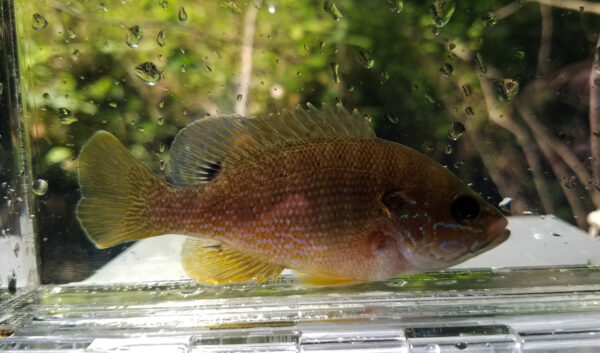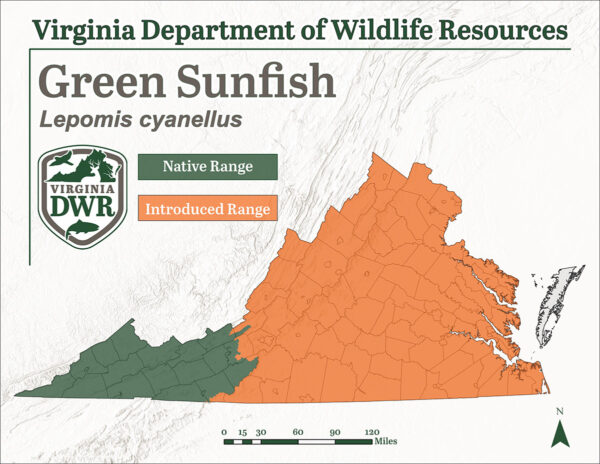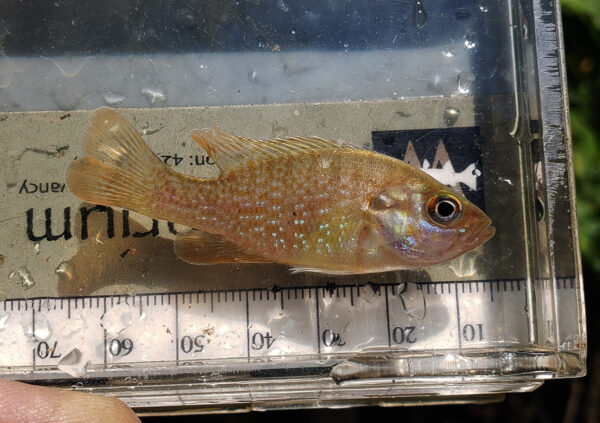A great example of the relatively large mouth attributed to Green Sunfish. ©Photo by Dootin Branch
A Green Sunfish in an observation tank. ©Photo by Dootin Branch
Fact File
Scientific Name: Lepomis cyanellus
Classification: Fish, Order Perciformes, Family Centrarchidae
Size: Green Sunfish can reach lengths of 10 inches in Virginia
Life Span: Up to 10 years
Identifying Characteristics

- More elongated body profile than most sunfish species
- Relatively large mouth
- Blue or green wavy lines project across the gill plate
- Bluish green in color, with faint, alternating blue, brown and brassy gold stripes along the side
- Lateral rows of blue spots often present along the side
- A dark opercular flap on the gill plate
- Anal fin often has a yellow-orange colored margin
Habitat
Green Sunfish are habitat generalists, able to survive in most warmwater environments. Green Sunfish thrive in small lakes, ponds, and backwater pools of lazy streams and rivers. Green Sunfish are more tolerant of turbid waters than other sunfish species.
Diet
Green Sunfish are opportunistic feeders, and will consume anything they can catch. This often includes aquatic and terrestrial insects, small crayfish and small fish.
Distribution:
Green Sunfish are native to the New and Upper Tennessee River drainages within Virginia. Green Sunfish have been introduced throughout much of the state, and are considered an invasive species in some environments. Anglers are reminded that it is illegal to stock fish into a public body of water without an authorization from the Virginia Department of Wildlife Resources.

Reproduction
Green Sunfish are cyclic spawners, able to spawn every two weeks between May and September in Virginia. Males use their tail to fan out a saucer-shaped nest in substrates, often close to the shoreline in shallow water. Once a female has deposited eggs and the male has fertilized, the male will defend the nesting site.

A juvenile Green Sunfish. Because Green Sunfish have a larger mouth allowing for more prey items, and grow faster than several other sunfish species, they typically grow faster and outcompete other sunfishes. ©Photo by Dootin Branch
Last updated: July 23, 2024
The Virginia Department of Wildlife Resources Species Profile Database serves as a repository of information for Virginia’s fish and wildlife species. The database is managed and curated by the Wildlife Information and Environmental Services (WIES) program. Species profile data, distribution information, and photography is generated by the Virginia Department of Wildlife Resources, State and Federal agencies, Collection Permittees, and other trusted partners. This product is not suitable for legal, engineering, or surveying use. The Virginia Department of Wildlife Resources does not accept responsibility for any missing data, inaccuracies, or other errors which may exist. In accordance with the terms of service for this product, you agree to this disclaimer.

